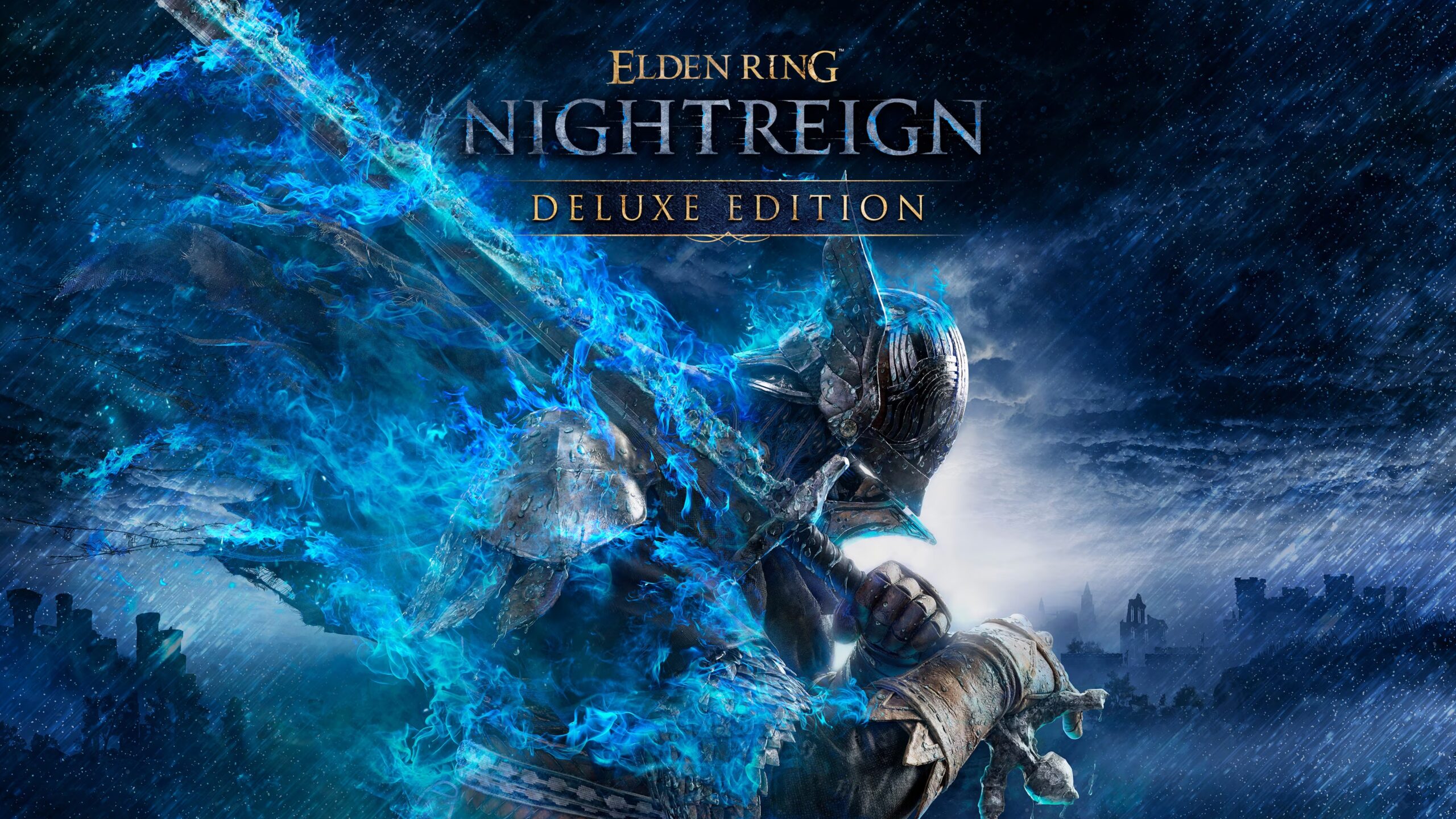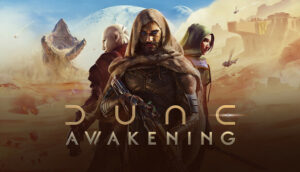Elden Ring Nightreign: Your Co-op Guide to Rising Together (PC & Console)
The Lands Between beckon once more, but this time, the call is different. With the reveal and impending launch of Elden Ring Nightreign, FromSoftware invites players not just to endure, but to “Rise together” against the encroaching darkness. Launching May 30, 2025, for PC, PlayStation, and Xbox platforms, Nightreign isn’t merely more Elden Ring; it’s a standalone adventure, a bold reimagining built from the ground up with three-player cooperative action at its very core. Forget DLC – this is a distinct experience crafted by FromSoftware and published by Bandai Namco Entertainment, blending the studio’s signature challenging combat with roguelike mechanics and a relentless focus on teamwork.
This shift towards a dedicated, structured co-op game marks a significant move for FromSoftware, potentially stemming from the immense popularity of community efforts like the Seamless Co-op mod for the original Elden Ring and a desire to explore new design avenues. The game’s nature as a standalone title, utilizing a familiar setting (a remixed Limgrave now called Limveld) and potentially many existing assets alongside a lower initial price point ($39.99 standard), suggests a framework allowing for experimentation with this new co-op roguelike formula without the immense pressure and scale of a mainline sequel.
Whether you’re a seasoned Tarnished or new to FromSoftware’s worlds, navigating the specifics of teaming up in Nightreign requires guidance. This article serves as your essential co-op companion, detailing how to connect with friends, understanding the unique mechanics, and preparing your squad to face the Nightlords across PC and consoles.
What is Elden Ring Nightreign Co-op? (And How It Differs)
Elden Ring Nightreign fundamentally changes the FromSoftware multiplayer paradigm. Instead of the asynchronous summons and invasions of Elden Ring and the Dark Souls series, Nightreign offers a focused, session-based cooperative roguelike experience.
The Core Loop: Three Days Against the Dark
The central structure revolves around a team of three players, known as “Nightfarers”, surviving across three in-game days. Each run tasks the trio with exploring the procedurally generated landscape of Limveld, a remixed version of Elden Ring‘s Limgrave featuring randomized elements like enemy placements, loot drops, and even unique points of interest.
During the daytime phases, which last roughly 15 to 20 minutes, the squad must frantically explore, clear enemy camps, defeat lesser bosses, gather gear, and level up. Adding pressure is a shrinking map mechanic, similar to battle royales, where a damaging zone gradually closes in, forcing players toward a specific objective. As night falls, the team must confront a challenging mini-boss. Surviving the first two day/night cycles allows the team to face the run’s ultimate objective on the third and final night: defeating a powerful “Nightlord” boss. A full run typically takes between 30 and 45 minutes.
Key Differences from Elden Ring Co-op
Understanding how Nightreign‘s co-op diverges from the base Elden Ring experience is crucial:
- Truly Seamless Sessions: Unlike Elden Ring, where co-op partners (Phantoms) are summoned for specific areas and automatically sent home after a major boss is defeated, Nightreign is designed for a continuous co-op experience within each run. Your team forms at the start and plays through the entire three-day cycle together, fostering a more cohesive team dynamic.
- Purely PvE Focus: A major departure is the complete absence of PvP invasions. Base Elden Ring co-op often forces players to contend with hostile player invaders, which can be disruptive. Nightreign removes this element entirely, allowing teams to focus solely on the environmental threats and AI enemies.
- Pre-Made Heroes (Nightfarers): Instead of building a character from scratch, players select from a roster of pre-designed Nightfarers. Each hero possesses unique starting gear, abilities, ultimate skills, and even distinct dodge styles. Known characters include the all-rounder Wylder, the tanky Guardian, the agile Duchess, the magic-focused Recluse, the archer Ironeye, and the aggressive Raider. This shifts the co-op focus towards team composition and synergizing abilities effectively, akin to class-based co-op games, rather than optimizing individual character builds.
- Roguelike Structure & Pace: The game embraces roguelike principles. Progression largely resets between runs, forcing players to adapt to randomized loot and enemy encounters each time. Persistent upgrades between runs exist in the form of “Relics” earned based on performance. This run-based design, combined with a significantly faster pace of movement and combat compared to Elden Ring, creates shorter, more intense play sessions suitable for groups and potentially lowers the barrier to entry compared to the vast commitment of the original RPG.
Gearing Up: Platforms, Editions, and Crossplay Reality
Before assembling your Nightfarer team, understanding the logistical details is essential.
Platform Availability & Release Date
Elden Ring Nightreign is set for a worldwide release on May 30, 2025 (with Steam unlocking slightly earlier on May 29 in some regions). It will be available on:
- PC (via Steam)
- PlayStation 5
- PlayStation 4
- Xbox Series X/S
- Xbox One
Editions and Planned DLC
Two main digital editions are available for pre-order:
- Standard Edition: Includes the base game and a bonus gesture ($39.99).
- Deluxe Edition: Includes the base game, bonus gesture, a digital artbook & mini soundtrack, and Additional DLC ($54.99).
The “Additional DLC” included in the Deluxe Edition is planned for release by Q4 2025 and will feature additional playable characters and bosses. While FromSoftware has stated Nightreign is not intended as a live-service game, the confirmation of paid DLC for core content like characters and bosses in a roguelike structure has raised some community discussion about potential impacts on gameplay variety for those who only purchase the standard edition.
The Crossplay Question: Setting Expectations
This is a critical point for many potential players:
- NO Cross-Platform Play: Elden Ring Nightreign does not support cross-platform multiplayer. This means PC players cannot team up with PlayStation or Xbox players, and PlayStation players cannot team up with Xbox players.
- YES Cross-Generation Play: The game does support cross-generation play within the same console family. PS4 users can play with PS5 users, and Xbox One users can play with Xbox Series X/S users.
The lack of full cross-platform support is a significant limitation for a game built entirely around co-op play. Friends scattered across different ecosystems (PC, PlayStation, Xbox) will be unable to play together. This decision fragments the player base from day one and could potentially impact matchmaking times and the game’s overall longevity, especially for a title relying so heavily on its multiplayer component. Players must ensure their entire intended group is on the same platform family before purchasing.
To clarify compatibility, refer to the table below:
| Platform 1 | Platform 2 | Can Play Together? | Notes |
|---|---|---|---|
| PC (Steam) | PC (Steam) | Yes | |
| PlayStation 5 | PlayStation 5 | Yes | Requires PS Plus subscription |
| PlayStation 5 | PlayStation 4 | Yes | Requires PS Plus subscription |
| PlayStation 4 | PlayStation 4 | Yes | Requires PS Plus subscription |
| Xbox Series X/S | Xbox Series X/S | Yes | Requires Xbox Game Pass Core/Ultimate sub |
| Xbox Series X/S | Xbox One | Yes | Requires Xbox Game Pass Core/Ultimate sub |
| Xbox One | Xbox One | Yes | Requires Xbox Game Pass Core/Ultimate sub |
| PC (Steam) | PlayStation 5/4 | No | No cross-platform play |
| PC (Steam) | Xbox Series/One | No | No cross-platform play |
| PlayStation 5/4 | Xbox Series/One | No | No cross-platform play |
Joining the Fray: Step-by-Step Co-op Guide (PC & Console)
While Nightreign streamlines co-op compared to Elden Ring, connecting with specific friends still requires coordination using a password system, as there appears to be no direct friend invite functionality based on available information. The process is expected to be identical across PC and consoles, aside from console players needing active online subscriptions (PS Plus or Xbox Game Pass Core/Ultimate).
Here’s how to team up using the password method:
Connecting with Friends in Nightreign (Password Method)
| Step | Action (Host & Friends) | Notes/Tips |
|---|---|---|
| 1 | Agree on Password (Outside Game) | All players in the group must decide on a unique password before launching the game or attempting to connect. Use something specific to avoid matching with strangers using common passwords. Coordinate via Discord, chat, etc. |
| 2 | Access Multiplayer Menu | Launch Nightreign. Navigate to the Roundtable Hold hub area. Interact with the Table of Lost Grace (the large round table) to open the matchmaking menu. |
| 3 | Enter Identical Password | Within the matchmaking/multiplayer settings menu accessed via the Table of Lost Grace, find the “Multiplayer Password” option. Every player in the group must enter the exact same password agreed upon in Step 1. |
| 4 | Select Target Boss | Choose the desired “Target” (the final boss for the run) from the available options in the matchmaking menu. All players should ideally select the same target, though the password is the primary grouping mechanism. |
| 5 | Start Matchmaking | Once the password is set and target selected, initiate the matchmaking process. |
| 6 | Wait to Connect | The game will now search for other players who have the same Multiplayer Password entered and are also searching for a game. Once a full team (likely 3 players, see Section 5) is found, the run will begin. |
Important Considerations:
- No Direct Invites: Reiterate that, based on current information and network tests, you cannot simply invite friends from a platform friend list into your game session. The password system is the primary method for grouping.
- Private Lobby Codes?: Some early hands-on previews mentioned using “private lobby codes” , and community discussions express a desire for private lobbies. While the password system accessed via the Table of Lost Grace is the confirmed method, it’s possible the final game might have additional options or terminology. Players should explore the final game’s menus carefully. The persistence of a password-based system, rather than modern invite features, might reflect technical constraints of the adapted engine or a deliberate choice by FromSoftware to maintain some level of their characteristic multiplayer setup friction.
- Network Test Limitations: Passwords were reportedly disabled or not the focus during the initial network tests, as the priority was stress-testing the servers with random matchmaking. The full functionality is expected in the launch version.
The Trio Conundrum: Solo, Trio, and the Duo Dilemma
One of the most discussed aspects of Elden Ring Nightreign is its strict player count structure. Officially, the game is designed for three-player teams but also allows for solo play. However, playing solo is expected to be significantly more challenging, as the game’s difficulty, enemy density, and boss encounters are balanced around a trio.
The Missing Duo Mode
Crucially, FromSoftware has confirmed there is no dedicated two-player (duo) mode. This decision has generated considerable frustration and disappointment within the community, particularly among players who typically game as a pair (such as couples or close friends). For many, the inability to play exclusively with their one preferred partner is a significant drawback and potential reason to skip the game.
How It Seems to Work (Based on Tests/Reports)
While a dedicated duo mode is absent, reports from network tests and sources like Fextralife suggest a specific nuance:
- It appears possible for two players using the same password to initiate matchmaking together.
- However, the game seems designed to always form a team of three. If two players queue together, the system will likely automatically add a third, random player to complete the trio.
- Therefore, achieving a pure two-player experience seems impossible by design, unless the third player disconnects or leaves the session. If a player does leave, the remaining duo might face encounters still scaled for three participants, potentially making the run much harder.
Players hoping to play with just one friend should manage their expectations: you can start the matchmaking process together using a password, but you will almost certainly be joined by a random third player. This implementation, forcing a third player into a duo’s queue, might create awkward social dynamics rather than solving the underlying desire for a pure duo experience.
The rationale behind the strict 1-or-3 player design hasn’t been fully detailed by FromSoftware, but speculation points towards simplified balancing, potential complications with mechanics like the revive system in a duo scenario, or a desire to ensure a consistent three-person team dynamic for all multiplayer sessions. Regardless of the reason, the decision prioritizes the intended three-player balance over accommodating the common duo playstyle, a choice that may alienate a significant segment of the potential co-op audience.
Playing Together: In-Game Co-op Mechanics
Once your team is formed and exploring Limveld, several unique mechanics facilitate cooperative play:
- Reviving Teammates: Nightreign features a distinct revive system. Instead of simply holding a button near a downed ally, players must physically hit their fallen teammate with attacks until their “Near-Death” meter is depleted. This transforms reviving into an active combat maneuver, requiring the reviver to manage enemy aggro and positioning while attacking their ally. It demands coordination, especially during chaotic boss fights, and prevents passive reviving, reinforcing the game’s aggressive pace.
- Shared Loot & Simplified Progression: Cooperation is rewarded directly, as Runes dropped by defeated enemies are shared among all team members. While specific gear drops appear individual, leveling up is streamlined – interacting with a Site of Grace presents a simple confirmation prompt to level up, removing the need to manually allocate stats during a run.
- Limited Communication Tools: In-game communication is restricted to a map pinging system and gestures/emotes. There is no built-in voice chat or text chat. This design choice strongly encourages, if not necessitates, the use of third-party communication software like Discord for effective strategy, callouts, and coordination, especially given the complexity of mechanics like reviving under pressure and synergizing abilities. Teams relying solely on in-game pings may find themselves at a disadvantage compared to organized groups on voice comms.
- Emphasis on Team Synergy: Success, particularly against tougher enemies and bosses, hinges on effectively combining the unique skills and ultimates of the chosen Nightfarers. Coordinating abilities, covering different roles (damage, tanking, support), and assisting each other through mechanics like the hit-to-revive system are paramount.
Enhance Your Nightreign Experience
Mastering Nightreign‘s intense co-op and intricate team synergies takes practice and coordination. The game’s reliance on teamwork and external communication tools presents both challenges and opportunities. If you and your Nightfarer squad are looking to optimize your communication setup for seamless teamwork, perhaps with a professionally configured Discord server tailored for gaming, or want expert advice on building a compelling stream to showcase your epic Nightlord takedowns and share your journey through Limveld, exploring specialized Gaming Services and Streaming Consultation (including Discord Setup) could give you the edge. You can find resources for this at dario89.pro.
(Please note: At the time of writing, the link provided [dario89.pro] appears to be inaccessible. You may need to search for alternative contact methods or check the link’s status independently.)
Conclusion: Dare to Stand Together Against the Fall of Night
Elden Ring Nightreign represents an exciting, albeit potentially divisive, new direction for FromSoftware. It sheds the skin of a traditional RPG expansion to emerge as a focused, fast-paced, standalone co-op roguelike. Its emphasis on three-player teams, unique Nightfarer classes, randomized runs, and frantic action promises a fresh way to experience the developer’s signature challenge.
However, the journey isn’t without its hurdles. The confirmed lack of cross-platform play significantly limits who can team up, and the controversial decision to exclude a dedicated duo mode forces many players into uncomfortable compromises. The game’s long-term success may hinge on whether the core gameplay loop – the thrill of synergistic combat, the rush of overcoming randomized challenges, and the satisfaction of felling Nightlords as a team – proves compelling enough to overcome these accessibility barriers.
Ultimately, Nightreign issues a clear challenge: gather your allies (on the same platform family!), coordinate your passwords, master the unique mechanics, and prepare to face the darkness together. As the tagline implores, dare to stand together against the fall of night when Elden Ring Nightreign launches on May 30th, 2025.












Add comment